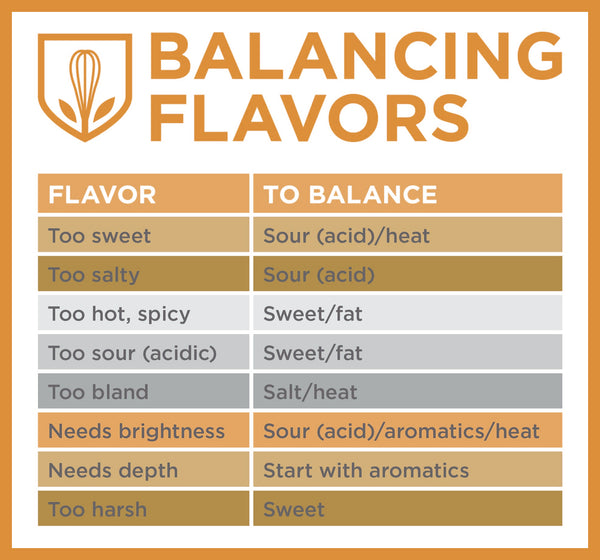- No products in the cart.
02
Nov

We've all heard the term "flavor," but have you ever wondered what makes up that distinct taste in your favorite dish? The answer is four basic elements: sweet, sour, salty, and bitter. These four components, when combined, can either make or break a dish. In this blog, we'll explore how these elements affect food, how they interact with each other, and how we can use them to create delicious and well-balanced meals.
The Art of Balancing the Elements
First, let's take a look at sweet. This element is fairly easy to recognize - it's the taste of sugar and other sweeteners. Sweetness helps to counterbalance other flavors, particularly bitterness. A little bit of sweetness can even enhance the savory taste in some dishes. However, too much sweetness can be overpowering and may make the dish unpalatable. For example, in a fruit salad, the sweetness of the fruit complements and balances the sourness of citrus fruits, making for a delicious and refreshing dish.
Next up is sourness. This element comes from acids, such as lemon juice, vinegar, and sour cream. It can provide a tangy and refreshing flavor, and can also help to cut through fatty or rich foods. Sourness is often used in cooking to balance sweetness, but too much can make a dish too tart and unpleasant. A good example of the use of sourness is in a vinaigrette dressing, where vinegar or lemon juice is mixed with oil to make a tangy dressing for salads.
Salty flavor comes from salt, which is a necessary ingredient in many dishes. Saltiness can enhance the other flavors in a dish and give it depth, but too much of it can make a dish overpowering and even unhealthy. Salty flavor is commonly found in savory dishes such as meats, soups, and stews, and is also a vital component in many snack foods such as chips and crackers.
Lastly, we have bitterness. This element can be found in coffee, cocoa, some vegetables, and certain herbs. Bitterness can provide a distinct and interesting flavor profile in a dish, but too much can make the dish unappetizing. In some cases, bitterness can be balanced out by sweetness or sourness. For example, in a chocolate cake recipe, bitter cocoa powder can be balanced out by the sweetness of sugar and vanilla flavoring.
The Key to a Delicious Recipe
Now that we understand the role of each of these four elements of flavor, it's clear how important it is to balance them in a dish. The key to good cooking is using these elements to complement and enhance each other, not overpower or cancel them out. By understanding the role of each in your cooking and experimenting with different combinations, you can unlock the potential for tantalizing taste sensations in your meals. So, the next time you're creating a dish, remember the importance of sweet, sour, salty, and bitter flavors, and have fun experimenting with the power of these elements in your cooking!
Bon Appetite!

